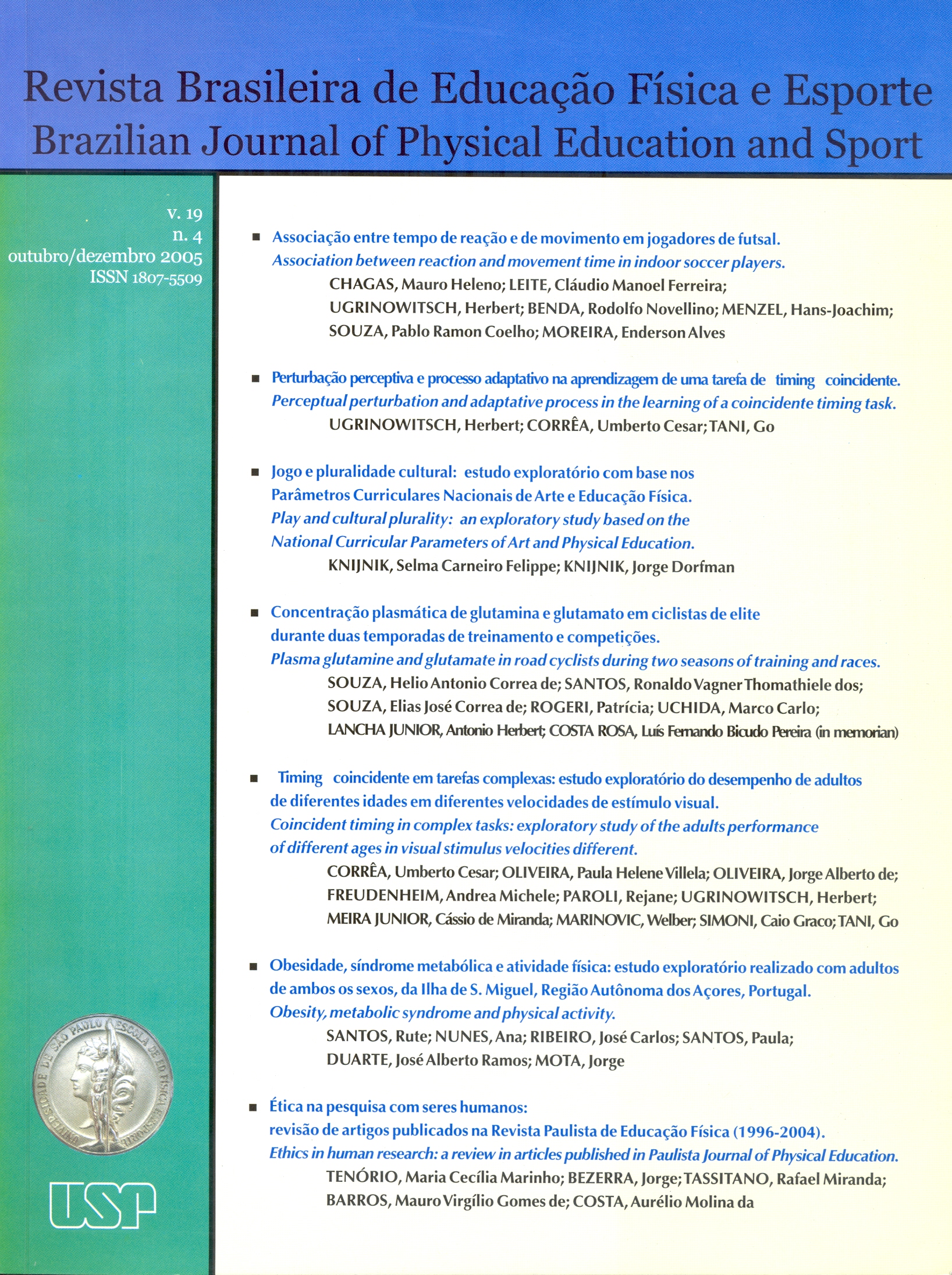Coincident timing in complex tasks: exploratory study of the adults performance of different ages in visual stimulus velocities different
DOI:
https://doi.org/10.1590/S1807-55092005000400005Keywords:
Coincident timing, Performance, Complex TaskAbstract
The goal of this study was to investigate the performance in a complex task of coincident timing as a function of age and of the velocity of visual stimulus. The participants were 58 voluntaries adult of both sex (38 youth adult with ages among 19 and 23 years and 20 mature adults with ages between 35 and 50 years). Each group of adult was divided in three subgroups according to velocities of visual stimulus. The task consisted of touching five response keys sequentially in conjunction with a visual stimulus. The dependent variable was error (absolute, variable and constant). The data were analyzed by non-parametric statistic, Kruskal-Wallis ANOVA pointed only difference between groups in the constant error. However, the Mann-Whitney U test with p adjusted with Bonferroni’s procedure wasn’t able to identify between which groups there was difference. Could conclude that youth and mature adult obtained similar performance in a complex task of coincident timing, independently of the velocity of visual stimulus.Downloads
Download data is not yet available.
Downloads
Published
2005-12-01
Issue
Section
naodefinida
License
Todo o conteúdo da revista, exceto onde está identificado, está licenciado sob uma Licença Creative Commons (CC-BY)
How to Cite
Corrêa, U. C., Oliveira, P. H. V., Oliveira, J. A. D., Freudenheim, A. M., Meira Junior, C. D. M., Marinovic, W., Simoni, C. G., Tani, G., Paroli, R., & Ugrinowitsch, H. (2005). Coincident timing in complex tasks: exploratory study of the adults performance of different ages in visual stimulus velocities different . Brazilian Journal of Physical Education and Sport, 19(4), 307-315. https://doi.org/10.1590/S1807-55092005000400005


